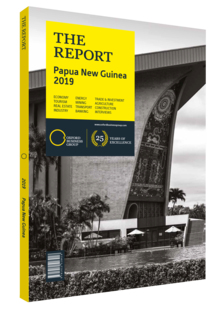Stan Joyce, Former Managing Director, South Pacific Brewery: Interview

Interview: Stan Joyce
How have government measures like the introduction of import tariffs affected domestic industry?
STAN JOYCE: The government has recognised the importance of manufacturing in Papua New Guinea and realised that a favourable import regime is crucial for the sector. Domestic manufacturers and the government have negotiated for a long time regarding how to help the sector without hurting the investment climate, and we should now have a very encouraging tariff regime.
The manufacturing sector accounts for 7-9% of GDP, and its contribution to the economy does not stop there. Not only does industry produce more jobs, but it also unlocks growth in other sectors – agriculture is a prime example. Industry is also important for PNG in its efforts to replace those imports that can easily be manufactured domestically. This would help the country solve its foreign currency shortage, which has been a major challenge to date.
Regardless, the government did well in issuing the sovereign bond: their approach was well managed and disciplined, and they did not capitalise financially on the opportunity themselves. A $500m bond is small in the US market, but it is substantial when loaned to a country that many people may know little about.
What steps should be taken to better integrate domestic companies into local supply chains?
JOYCE: Many raw materials are still imported. The tariff system will have little impact on this in the short term, but in the long term it may create sufficient incentives for industries to relocate to PNG. Regardless, the focus should be on those raw materials that PNG already possesses, such as timber and fish.
This is made even more important by the fact that domestic demand will probably remain limited for some time. Even if local GDP doubles over the coming 10 years, the population is likely to increase at a similar rate, and GDP per capita will remain rather small. Thus, we should focus on exports. Some of the best growth opportunities can be found within the region: Asian countries that are experiencing rapid industrialisation and population growth need food that PNG can provide.
The integration of local supply chains begins in agriculture, and local manufacturers and the government have begun to recognise this potential. Investment in sustainable, agro-industrial projects will help manufacturers, and make it easier for foreign investors to enter the PNG market and manage these projects. The biggest challenge, however, is to encourage farmers to progress from traditional agrarian models to modern methods.
In what areas can industry gain a competitive edge?
JOYCE: In principle, PNG’s young and growing population should be attractive to investors, as it offers a wide pool of potential consumers in an increasingly urbanised environment. However, the market remains relatively small, with limited demand. While many of the larger industries are already well established and would be satisfied with growth of 2.5-5% over the next five years, this is not attractive to new investors.
Furthermore, PNG is not competitive when it comes to operational costs and land infrastructure: most utilities are very expensive and of poor quality. For instance, the cost of transporting a container from Lae to Mendi – a 600-km, overland trip – is comparable to transporting the same container to Rotterdam and back twice. A priority infrastructure development going forward would be the repair of the Highlands Highway. Construction in PNG is typically in line with the highest global standards. However, projects run out of capital after building only a few kilometres, and there remains no money for maintenance of these projects.
While power and water will probably remain challenges, digitalisation will be transformational. PNG could see more progress in five years with digital technology development than it would in 150 years without. This offers opportunities like enhanced connectivity and the ability to advertise anywhere in the world.
You have reached the limit of premium articles you can view for free.
Choose from the options below to purchase print or digital editions of our Reports. You can also purchase a website subscription giving you unlimited access to all of our Reports online for 12 months.
If you have already purchased this Report or have a website subscription, please login to continue.

